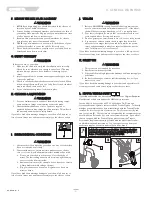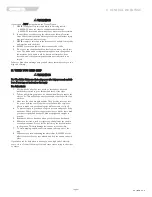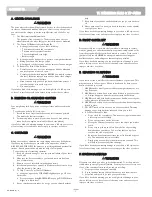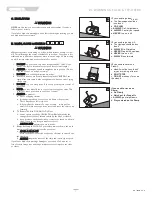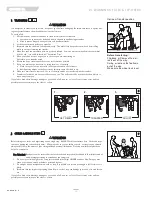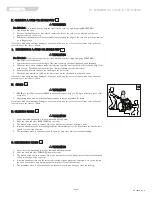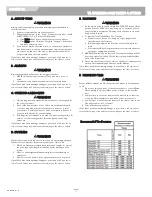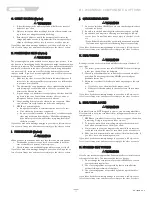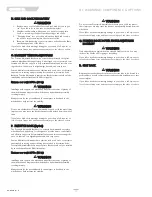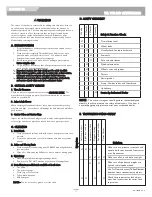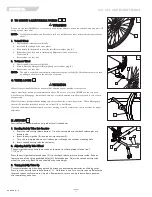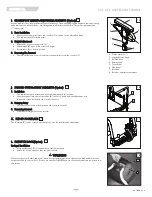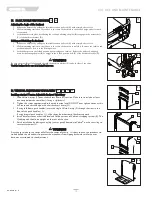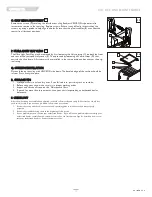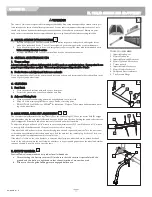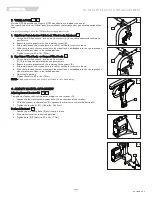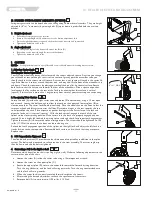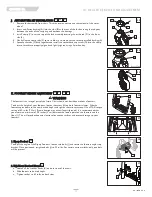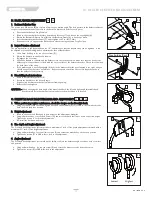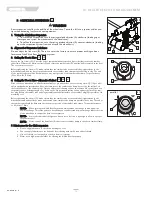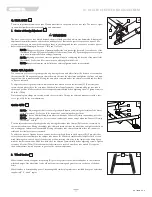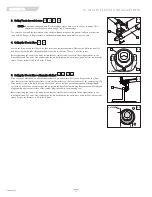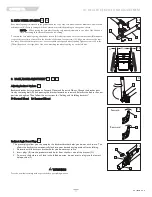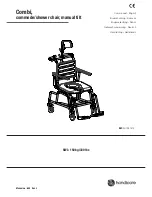
IX. DEALER SERVICE AND ADJUSTMENT
MK-100084 Rev. A
20
Q UI C KI E 7 R
WARNING
The owner of this chair is responsible for making sure that it has been setup and adjusted by a trained service pro-
fessional under the advice of a healthcare professional. Service and/or adjustments that require the use of tools,
should only be done by an authorized supplier under the advice of a healthcare professional. Always use parts
and/or accessories that have been recommended and approved by Sunrise Medical when servicing this chair.
A. DEALER SERVICE INTRODUCTION
1.
At least once per year, this chair should have a complete inspection, safety check, and regular service
made by an authorized dealer. The tool list at right is a good starting point for proper maintenance.
2.
If you have discovered a worn, bent, or damaged part, repair or replace them with recommended parts
before returning this chair to service
.
3
All major maintenance and repair work should be done by the authorized dealer.
B. CRITICAL MAINTENANCE TIPS
1. Torque settings:
A torque setting is the optimum tightening which should be made on a particular fastener. It is important to use
proper torque settings where specified. When not specified, torque settings should be
60 in-lbs
2. Dealer Service and Adjustment Reference materials:
Go to www.sunrisemedical.com for parts manuals, instruction sheets, and instructional videos that will aid in the
repair of your Quickie wheelchair.
C. CLEANING
1. Paint Finish
a.
Clean the painted surfaces with mild soap or detergent.
b.
Protect the paint with a coat of non-abrasive auto wax.
2. Axles and Moving Parts
a.
Clean around axles and moving parts with a slightly damp (not wet) cloth.
b.
Wipe off or blow away any fluff, dust or dirt on axles or moving parts.
c.
DO NOT USE 3-in-ONE oil, or WD-40
®
for lubrication. Only use Teflon based Lubricant when work-
ing on this wheelchair.
D. REAR WHEEL AXLE NUT ADJUSTMENT
The rear wheel axle (B) attaches the rear wheel (D) to the camber plug (C). When the detent balls (E) engage
into the camber plug the rear wheel effectively becomes locked onto the chair. Pushing the quick-release button
(A) disengages the detent balls and allows removal of the axle and wheel assembly.
To adjust the axle you will need a 3/4" wrench to turn the adjustment nut (F). You will also need a 1/2" wrench
to securely hold the ball detent end of the axle to prevent it from turning.
If the wheel and axle will not lock into the camber plug then the axle requires adjustment. Turn the nut count-
er-clockwise approximately 1/4 revolution and try to lock the axle into the camber plug. If it doesn't lock, con-
tinue making small nut adjustments until it securely locks.
If the wheel is locked on the chair but there is excessive wheel play (the wheel hub can be pushed back and
forth on the axle) then adjust the nut clockwise until there is no perceptible gap between the wheel and camber
tube and the axle is securely locked onto the chair.
E. ANTI-TIP RECEIVER
Sunrise Medical recommends anti-tip tubes for all wheelchairs.
a. After attaching the Anti-tip receiver (G) make sure that the receiver is parrallel with the
ground, and the bolts are tightened so that the anti-tips don’t move when used.
b. Make sure that the guide/locking pins are engaged before use.
27
29
28
30
28
29
TOOLS YOU WILL NEED
1. Imperial Hex key set
2. Metric Hex key set
3. Imperial Open-end Wrench set
4. Metric Open-end Wrench set
5. Torque wrench
6. Imperial Hex bit Socket set
7.
Metric Hex bit Socket set
8. Phillips and Flat screwdrivers
9. Tire Pressure Gauge
A
B
C
D
E
F
A
E
27
30
H
G

